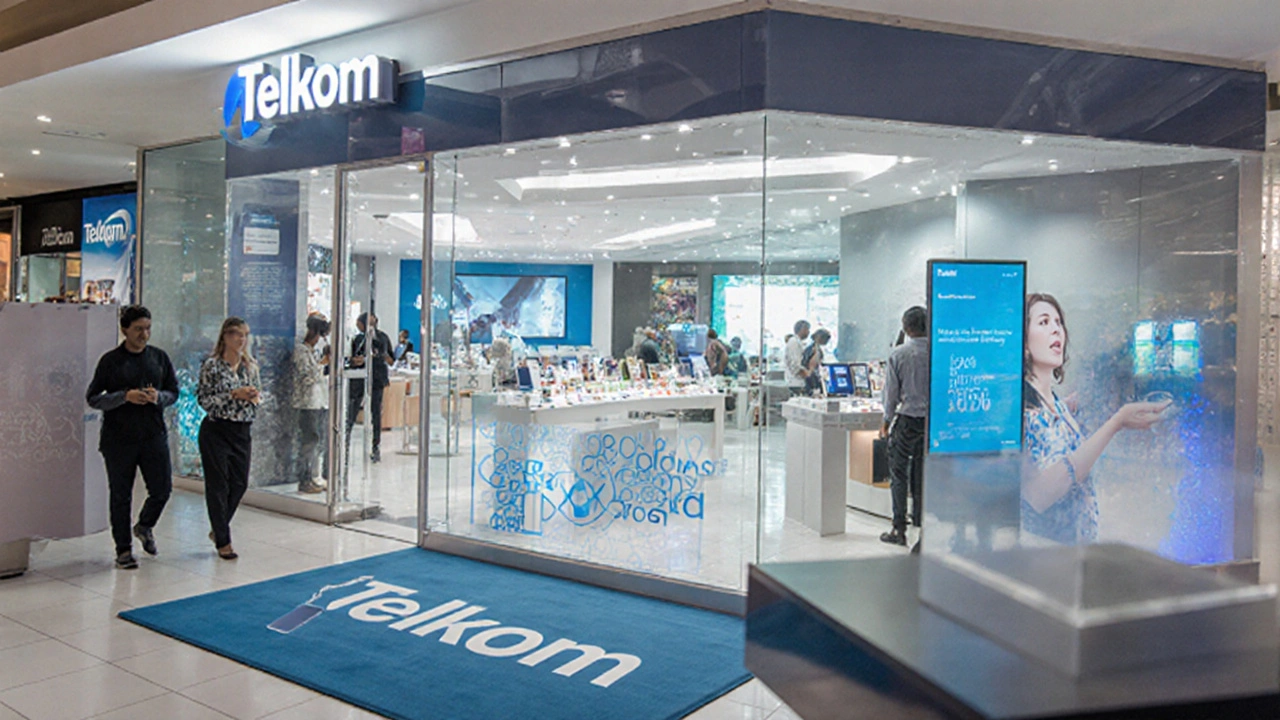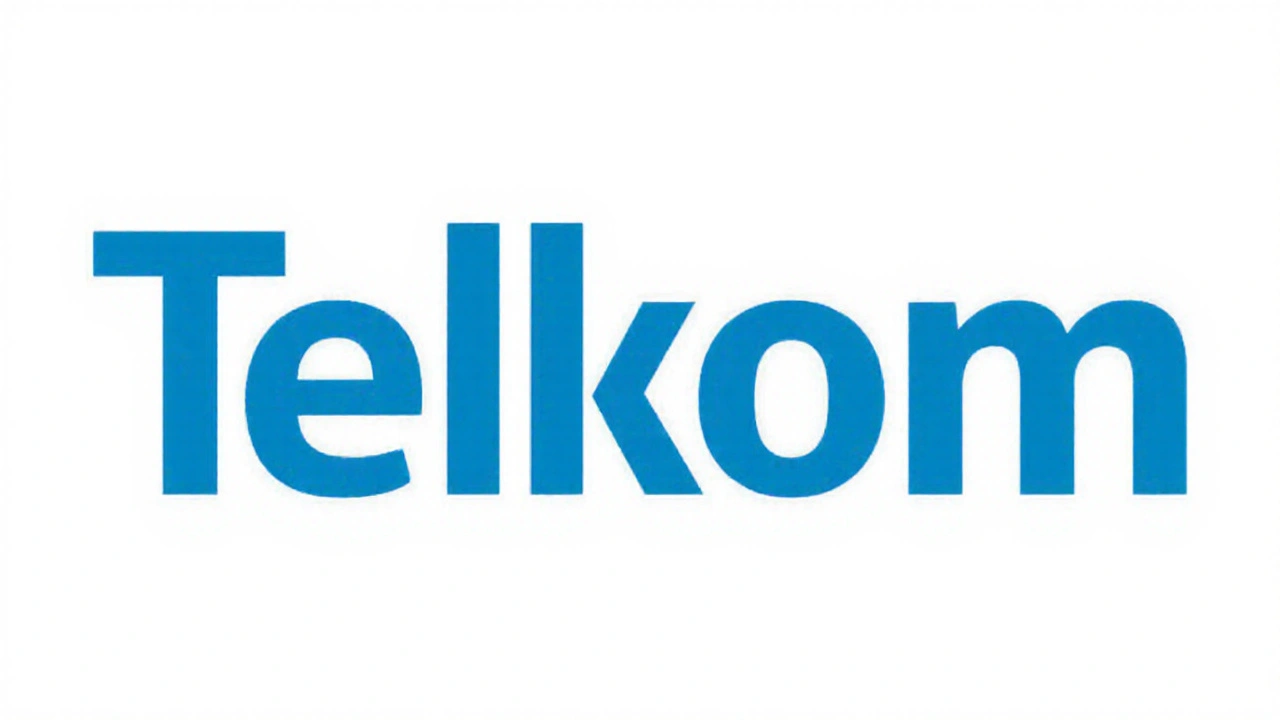Why Telkom Is Moving Into MVNOs
When you hear the term MVNO, you might picture a small startup renting capacity from a big carrier. In South Africa, however, the story is flipping. Telkom, the country’s second‑largest fixed‑line and mobile operator, decided to become an MVNO host in March 2025. The catalyst? A rule from the Independent Communications Authority of South Africa (ICASA) that says any mobile licence holder must support at least three Black‑owned MVNOs. By partnering with an unnamed mobile‑virtual‑network‑enabler (MVNE), Telkom can satisfy that requirement without building a whole new ecosystem from scratch.
Beyond compliance, there’s a strategic angle. Telkom’s traditional revenue streams—voice, broadband and enterprise services—are under pressure from over‑the‑top apps and price‑sensitive consumers. Offering an Telkom MVNO platform lets the company tap into brand‑centric mobile services that command higher margins. Brands get to design their own plans, loyalty perks and data bundles while Telkom supplies the underlying network, roaming agreements and customer‑care infrastructure.
The partnership model also reduces risk for Telkom. Instead of hunting for the right technology partner over months, the MVNE brings a ready‑made, end‑to‑end suite that handles everything from product design to billing. That means Telkom can start onboarding brands within weeks, adapt to each partner’s tech preferences, and keep its own network utilization high.
For the brands eyeing the telco space, the proposition is equally attractive. Banks, insurance firms and retailers are already experimenting with branded phones and data‑driven loyalty schemes. With Telkom’s backing, they gain access to a high‑quality South African network and a team that can tailor the customer journey—from sign‑up to support—exactly to their needs.

The Growing Landscape of South Africa’s MVNO Market
The MVNO sector in South Africa isn’t just a niche hobby; it’s a fast‑growing industry. According to the Africa Analysis MVNO Report (Feb 2024), potential revenue sits around ZAR 83.6 million (about US $4.6 million). Since the first MVNO launched in 2006, subscriber numbers have surged, climbing 51 % year‑on‑year to hit 4.3 million by the end of 2023.
Analysts at BMIT project that the subscriber base could more than double by 2029, reaching between 11 and 12 million users. That translates to an 18 % compound annual growth rate—a pace that outstrips many traditional telecom segments. The drivers are clear: banks want to embed mobile services into their apps, insurers see data‑driven risk models as a new revenue source, and retailers aim to lock customers into loyalty ecosystems that include phone plans.
Existing players have already carved out distinct niches. FNB Connect, for example, bundles banking benefits with data, while Capitec Connect leverages its massive retail banking footprint to push affordable data bundles to price‑sensitive customers. Retail‑oriented MVNOs like PnP Mobile and TFG Connect use their store networks to sell phones and plans side‑by‑side with apparel. Meanwhile, niche operators such as Boxercom and Sakeng Mobile focus on specific community or linguistic groups, offering localized content and support.Telkom’s entry adds a heavyweight to this mix. Its network covers most of the country, and its roaming agreements open doors for South African travelers abroad. By opening its platform to any brand willing to craft a unique mobile proposition, Telkom could accelerate the diversification of services on offer. Imagine a supermarket chain launching a “grocery‑plus” data plan that rewards customers with extra gigabytes when they spend a certain amount each month. Or an insurance firm offering a data‑driven health monitoring package that feeds directly into its underwriting models.
Flexibility is the buzzword in Telkom’s outreach. The company says it can tailor onboarding to each partner’s technology stack—whether the brand prefers a cloud‑native API, an on‑premise solution or a hybrid model. Product design assistance means partners don’t have to start from a blank slate; they can lean on Telkom’s expertise in pricing, tiering and regulatory compliance. Customer experience teams will map out specific journeys, ensuring that support tickets, plan changes and bill enquiries feel seamless for the end‑user.
All of this happens against a backdrop of fierce competition for spectrum and network quality. South Africa’s mobile market remains dominated by a few large operators, and the government’s push for Black ownership is reshaping the competitive terrain. By meeting ICASA’s Black‑owned MVNO mandate early, Telkom avoids potential penalties and positions itself as a cooperative player in the country’s broader digital transformation agenda.
What does this mean for the average South African consumer? More choice, for one. Brands can now bundle mobile services with products you already buy—think a data deal that comes with a discount on your monthly grocery bill. It could also drive down prices as competition intensifies. On the flip side, the market could become crowded, making it harder for smaller MVNOs to stand out without a strong brand backing.
The next few months will be a litmus test. Telkom has announced it is actively scouting partners, and early adopters will likely be the banks and retailers already eyeing digital expansion. Watch for announcements of new branded plans, pilot programs and perhaps even joint marketing campaigns that blend telecom with everyday retail experiences. If the growth forecasts hold, South Africa could become a showcase for how MVNOs reshape traditional telecom markets—not just locally, but as a model for other emerging economies.


Janette Cybulski
September 26, 2025 AT 14:54Seeing Telkom step into the MVNO space feels like a win for consumers who want more tailored mobile options. By leveraging an MVNE, they can roll out branded plans without the huge upfront cost, which should keep prices competitive. It also gives local brands a shortcut to get on a solid network while they focus on their unique value‑adds. If the rollout stays smooth, we might see a wave of niche services that actually listen to what different communities need.
Mildred Alonzo
October 2, 2025 AT 09:48Regulatory mandates can accelerate market diversification and the ICASA rule creates a clear entry point for Black‑owned operators
Elizabeth Bennett
October 8, 2025 AT 04:41From a strategic standpoint, Telkom's move lowers the barrier for sectors like fintech and retail to embed connectivity into their core offerings; this could drive incremental ARPU and reduce churn across the board. The MVNE partnership also ensures rapid time‑to‑market, which is crucial when competitors are already experimenting with similar models. Expect the next quarter to reveal pilot programs that blend data bundles with loyalty incentives, reshaping how South African consumers view mobile services.
linda menuhin
October 13, 2025 AT 23:34Life's kinda like a network – you connect, you share, you get powered up, ya know? When big telcos smile and hand out the rope, the little fish get a chance to swim far beyond their tiny ponds. It's a wild dance of electrons and ambition, and sometimes a typo is just the universe winking at us.
Jeff Abbott
October 19, 2025 AT 18:28Honestly, this whole partnership looks like a corporate elbow‑patch for Telkom's dwindling subscriber base. Instead of innovating, they're just recycling the same old infrastructure and slapping a fancy label on it. If you ask me, it's a desperate PR stunt that will barely dent the market share of the real MVNO pioneers.
Quinton Merrill
October 25, 2025 AT 13:21While the criticism is sharp, the underlying tech stack could still bring real benefits to emerging brands 🚀. An MVNE handles billing, SIM provisioning, and network orchestration, which means less overhead for startups trying to launch niche services. If they play it right, the ecosystem might actually get a boost rather than a bust.
Linda Lawton
October 31, 2025 AT 07:14All these big players are just pushing a hidden agenda to keep our data locked in their vaults, dressed up as “innovation”. It's like they're whispering sweet promises while secretly building a surveillance net that tracks every swipe and call. The color‑filled promises mask a very simple truth: profit over privacy, always.
Ashley Bradley
November 6, 2025 AT 02:08When we examine the motivations behind such moves, we find a blend of economic necessity and cultural ambition. The desire to empower local brands aligns with a broader narrative of digital sovereignty, yet the execution often mirrors global trends. Thus, the story is not merely about profit, but about identity formation in a hyper‑connected world.
Joe Delaney
November 11, 2025 AT 21:01Sounds like a solid plan for more choice.
Ruben Vilas Boas
November 17, 2025 AT 15:54Giving consumers more options usually pushes all players to improve service quality and price fairness, which benefits everyone in the long run.
George Thomas
November 23, 2025 AT 10:48The regulatory framework appears to be a catalyst for expanding competition, yet the actual market impact will depend on how effectively Telkom integrates the MVNE capabilities.
Michelle Linscomb
November 29, 2025 AT 05:41Let's cut the polite talk-if Telkom doesn't deliver fast, those Black‑owned MVNOs will starve and the whole policy will look like a hollow promise.
John McDonald
December 5, 2025 AT 00:34From a network economics perspective, leveraging an MVNE shortens the CAPEX cycle, accelerates OPEX optimization, and enables rapid rollout of B2B2C verticals leveraging QoS‑aware slices.
Jordyn Wade
December 10, 2025 AT 19:28The integration of an MVNE into Telkom's architecture is not just a technical decision but a strategic lever that can reshape the entire value chain.
First, by off‑loading the provisioning and billing layers to a specialized enabler, Telkom can preserve its core network resources for high‑value traffic.
Second, the reduced time‑to‑market empowers brand partners to experiment with innovative pricing models such as usage‑based tariffs or bundled loyalty points.
Third, this approach creates a fertile ground for cross‑industry collaborations, where fintech firms can embed data plans directly into their digital wallets.
Moreover, the regulatory requirement to support Black‑owned MVNOs adds a layer of social responsibility that aligns with broader corporate ESG goals.
From a financial standpoint, the incremental revenue streams generated by these niche operators can help offset the declining margins in traditional voice services.
Operationally, the MVNE's platform offers real‑time analytics, which allows both Telkom and its partners to monitor usage patterns and optimize network performance on the fly.
Such data‑driven insights are crucial for tailoring promotions that resonate with specific demographic segments, thereby increasing customer stickiness.
In addition, the modular nature of the MVNE solution means that future upgrades, such as 5G slicing or edge computing capabilities, can be incorporated with minimal disruption.
This flexibility is particularly important in a market that is witnessing rapid adoption of mobile‑first services across banking, insurance, and retail.
Furthermore, by fostering a diverse ecosystem of MVNOs, Telkom can mitigate the risk of market saturation that often plagues homogeneous service offerings.
A varied portfolio of brand‑specific plans also helps the operator differentiate itself from the incumbent competitors who may rely on generic, one‑size‑fits‑all packages.
It is also worth noting that the success of this initiative hinges on the quality of customer support provided by Telkom, as end‑users will attribute any service issues to the brand they see on the bill.
Therefore, investment in robust omnichannel support and transparent communication channels should be treated as a priority.
Finally, continuous monitoring of regulatory developments will ensure that Telkom remains compliant while capitalizing on new opportunities as they arise.
Overall, the MVNE partnership represents a multidimensional growth engine that, if managed wisely, can deliver sustainable benefits for the operator, its partners, and the end‑consumers alike.
Zoe Birnbaum
December 16, 2025 AT 14:21Wow, it's exciting to watch Telkom open the door for so many fresh ideas-can’t wait to see what creative mobile bundles pop up next!